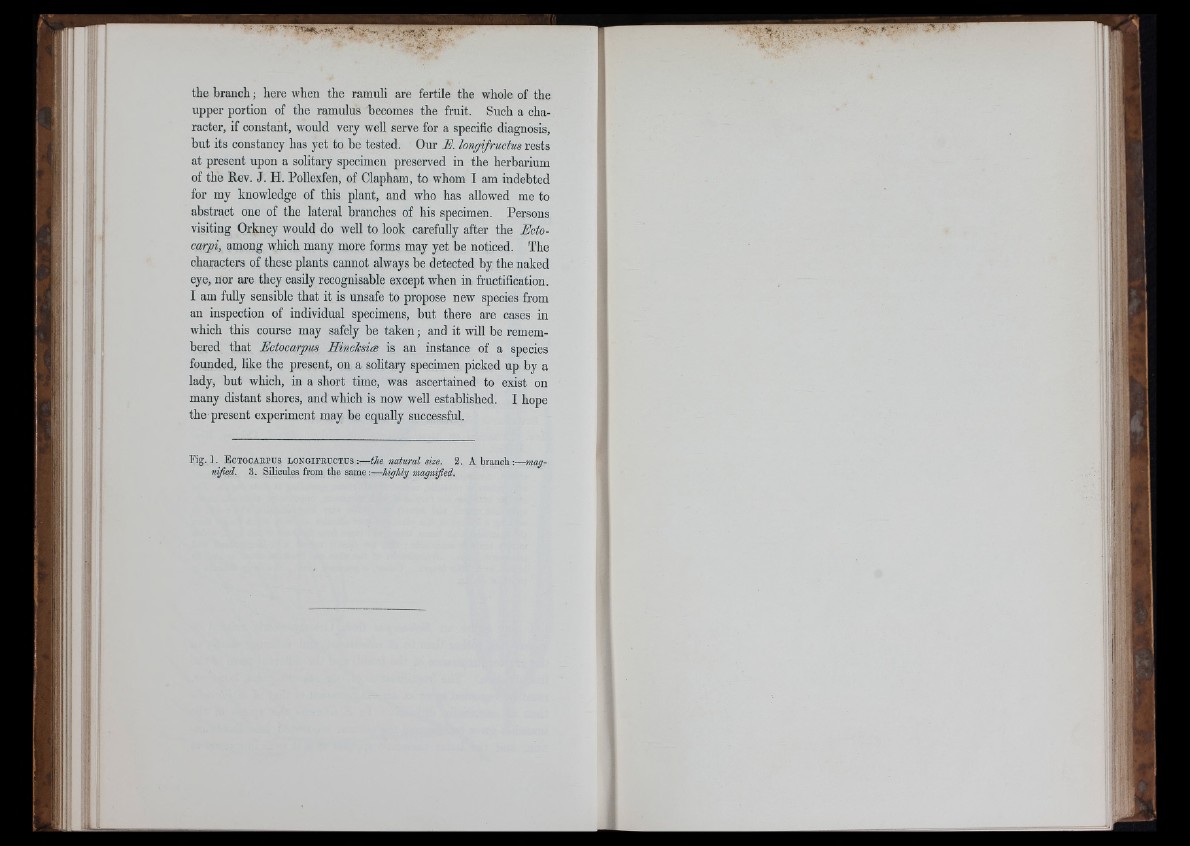
■1'
t j .
r.J:
the branch; here when the ramuli are fertile the whole of the
upper portion of the ramulus becomes the fruit. Such a character,
if constant, would very well serve for a specific diagnosis,
but its constancy has yet to be tested. Our E. longifruetus rests
at present upon a solitary specimen preserved in the herbarium
of the Rev. J. H. Pollexfen, of Clapham, to whom I am indebted
for my knowledge of this plant, and who has allowed me to
abstract one of the lateral branches of his specimen. Persons
visiting Orkney would do well to look carefully after the Edo-
carpi, among which many more forms may yet be noticed. The
characters of these plants cannot always be detected by the naked
eye, nor ai-e they easily recognisable except when in fructification.
I am fully sensible that it is unsafe to propose new species from
an inspection of individual specimens, but there are cases in
which this course may safely be taken; and it will be remembered
that Edocarpus Hincksice is an instance of a species
founded, like the present, on a solitary specimen picked up by a
lady, but which, in a short time, was ascertained to exist on
many distant shores, and which is now well established. I hope
the present experiment may be equally successful.
Fig. ] . E c t o c a k p u s l o n g i p b u c t u s -.— the natural size. 2. A branch -.—mag-
nijkd. 3. Silicules from the same:—/ ‘ ”